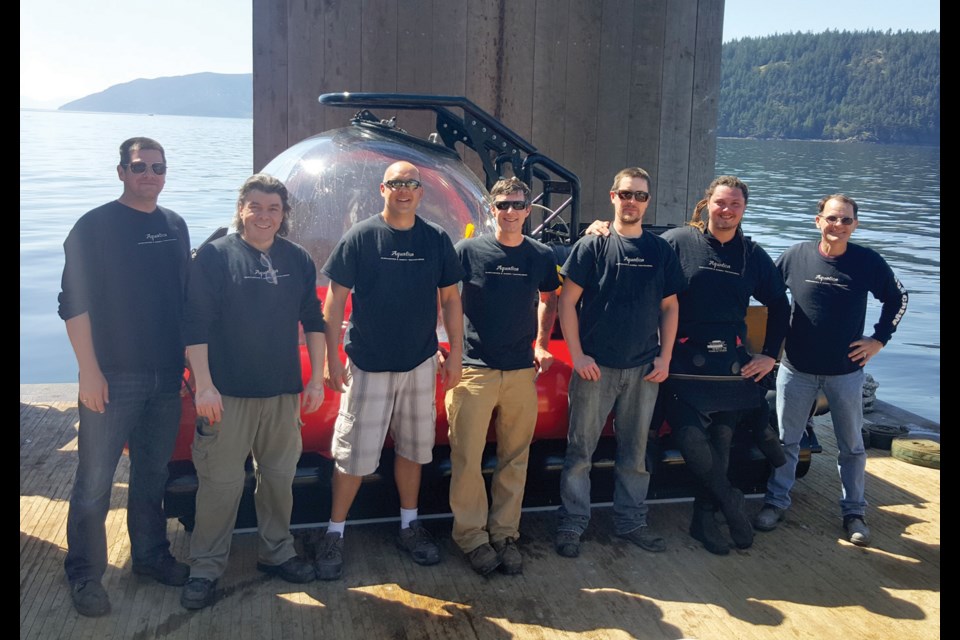What’s growing on down there?
It’s a question Artificial Reef Society of B.C. director Rick Wall is hoping to answer this fall when a three-person submarine is scheduled to survey the depths of the downed HMCS Annapolis to look for signs of the life aquatic.
Divers have catalogued tubeworms, sea stars, anemones, mussels, prawns, rockfish and perch on the hulls and decks of the destroyer since its sinking in April 2015. However, Wall is hopeful the submarine will allow for a more detailed account of the benefits of the man-made reef.
“We’re trying to show graphically, in good, documentary-quality pictures, how much growth is actually on the ships and the effect of any paint schemes or any surface preparation,” Wall said.
Downing the destroyer was opposed by both the Save Halkett Bay Marine Park Society and the Georgia Strait Alliance over concerns the ship’s paint would leech toxic contaminants into the water.
The artificial reefs are a boon to biodiversity, offering habitat for rockfish and crustaceans on the figurative and literal bottom of the food chain, benefiting the food chain all the way to the surface, according to Wall.
While there is anecdotal evidence to support his claim – primarily from scuba divers – Wall is hopeful the voyages to the floor of Long Bay will provide proof positive.
While a scuba diver would have trouble spending more than 20 minutes appraising the Annapolis, the Stingray 500, a three-person submersible made by West Vancouver company Aquatica, will allow for much longer inspections.
The occupants will need bathroom breaks before the submersible will need to surface, according to Aquatica president Harvey Flemming.
The submersible, which looks a little like a Jet Ski that’s blown a bubble, can traverse waters at a depth of 150 metres for about eight hours, according to Flemming.
Rather than being limited by a computer screen fed by a remotely operated vehicle, the Stingray affords room for a pilot, scientist and videographer to see what sort of shape the ship’s in.
While it can’t go inside the wreck like a scuba diver could, the Stingray is quite manoeuvrable and should serve the artificial reef society well, according to Flemming.
The project expedition is pencilled in for October but Flemming is hopeful the submarine will be diving toward the Annapolis in late September.
With dozens of derelict vessels dotting B.C.’s coastline, Wall is hopeful the enhanced study of the Annapolis will help reefing become more prevalent.
“It’s a viable option for getting rid of derelict ships, as opposed to the cost of recycling,” Wall said. “(You) can never recoup the cost of dismantling a ship with the scrap you get out of it.”
In the meantime, Wall – who once served as an engineer on the Annapolis – is excited to slip beneath the waves this fall.
“Who knows, I might even get to go down and see my old ship,” he said.
The expedition is also scheduled to include inspections of freighter GB Church, which was sunk near Sidney, B.C. in 1991, and a sunken Boeing 737, in Stuart Channel off Chemainus, B.C.



